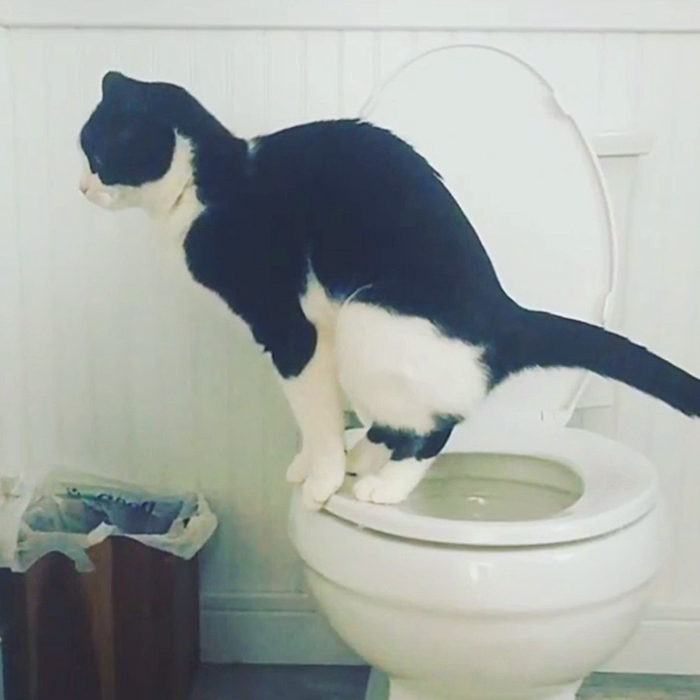We have unearthed this post relating to How to Dispose of Cat Poop and Litter Without Plastic Bags directly below on the internet and decided it made perfect sense to write about it with you in this article.

Introduction
As cat owners, it's important to bear in mind just how we get rid of our feline close friends' waste. While it might appear convenient to flush cat poop down the toilet, this practice can have detrimental consequences for both the setting and human wellness.
Alternatives to Flushing
The good news is, there are more secure and much more responsible ways to throw away cat poop. Think about the complying with choices:
1. Scoop and Dispose in Trash
The most common technique of taking care of cat poop is to scoop it into a naturally degradable bag and throw it in the trash. Make sure to utilize a specialized clutter inside story and take care of the waste without delay.
2. Usage Biodegradable Litter
Go with eco-friendly pet cat trash made from products such as corn or wheat. These litters are environmentally friendly and can be safely gotten rid of in the garbage.
3. Bury in the Yard
If you have a yard, take into consideration burying pet cat waste in an assigned location far from veggie gardens and water resources. Make sure to dig deep adequate to prevent contamination of groundwater.
4. Set Up a Pet Waste Disposal System
Purchase a pet dog garbage disposal system especially made for pet cat waste. These systems utilize enzymes to break down the waste, minimizing odor and environmental impact.
Wellness Risks
Along with environmental concerns, purging feline waste can also posture health and wellness dangers to human beings. Feline feces may have Toxoplasma gondii, a parasite that can create toxoplasmosis-- a potentially extreme health problem, particularly for expecting women and individuals with damaged immune systems.
Ecological Impact
Flushing feline poop presents harmful pathogens and parasites into the supply of water, presenting a considerable danger to water ecological communities. These impurities can adversely affect marine life and concession water top quality.
Verdict
Liable family pet ownership extends past giving food and sanctuary-- it likewise involves correct waste administration. By refraining from flushing pet cat poop down the bathroom and going with alternative disposal approaches, we can reduce our environmental footprint and protect human health and wellness.
Why Can’t I Flush Cat Poop?
It Spreads a Parasite
Cats are frequently infected with a parasite called toxoplasma gondii. The parasite causes an infection called toxoplasmosis. It is usually harmless to cats. The parasite only uses cat poop as a host for its eggs. Otherwise, the cat’s immune system usually keeps the infection at low enough levels to maintain its own health. But it does not stop the develop of eggs. These eggs are tiny and surprisingly tough. They may survive for a year before they begin to grow. But that’s the problem.
Our wastewater system is not designed to deal with toxoplasmosis eggs. Instead, most eggs will flush from your toilet into sewers and wastewater management plants. After the sewage is treated for many other harmful things in it, it is typically released into local rivers, lakes, or oceans. Here, the toxoplasmosis eggs can find new hosts, including starfish, crabs, otters, and many other wildlife. For many, this is a significant risk to their health. Toxoplasmosis can also end up infecting water sources that are important for agriculture, which means our deer, pigs, and sheep can get infected too.
Is There Risk to Humans?
There can be a risk to human life from flushing cat poop down the toilet. If you do so, the parasites from your cat’s poop can end up in shellfish, game animals, or livestock. If this meat is then served raw or undercooked, the people who eat it can get sick.
In fact, according to the CDC, 40 million people in the United States are infected with toxoplasma gondii. They get it from exposure to infected seafood, or from some kind of cat poop contamination, like drinking from a stream that is contaminated or touching anything that has come into contact with cat poop. That includes just cleaning a cat litter box.
Most people who get infected with these parasites will not develop any symptoms. However, for pregnant women or for those with compromised immune systems, the parasite can cause severe health problems.
How to Handle Cat Poop
The best way to handle cat poop is actually to clean the box more often. The eggs that the parasite sheds will not become active until one to five days after the cat poops. That means that if you clean daily, you’re much less likely to come into direct contact with infectious eggs.
That said, always dispose of cat poop in the garbage and not down the toilet. Wash your hands before and after you clean the litter box, and bring the bag of poop right outside to your garbage bins.
https://trenchlesssolutionsusa.com/why-cant-i-flush-cat-poop/

As a person who reads on How to Dispose of Cat Poop and Litter Without Plastic Bags, I assumed sharing that piece of content was worth the trouble. Enjoyed reading our review? Please share it. Help others locate it. I am grateful for your time. Visit again soon.
Click Here